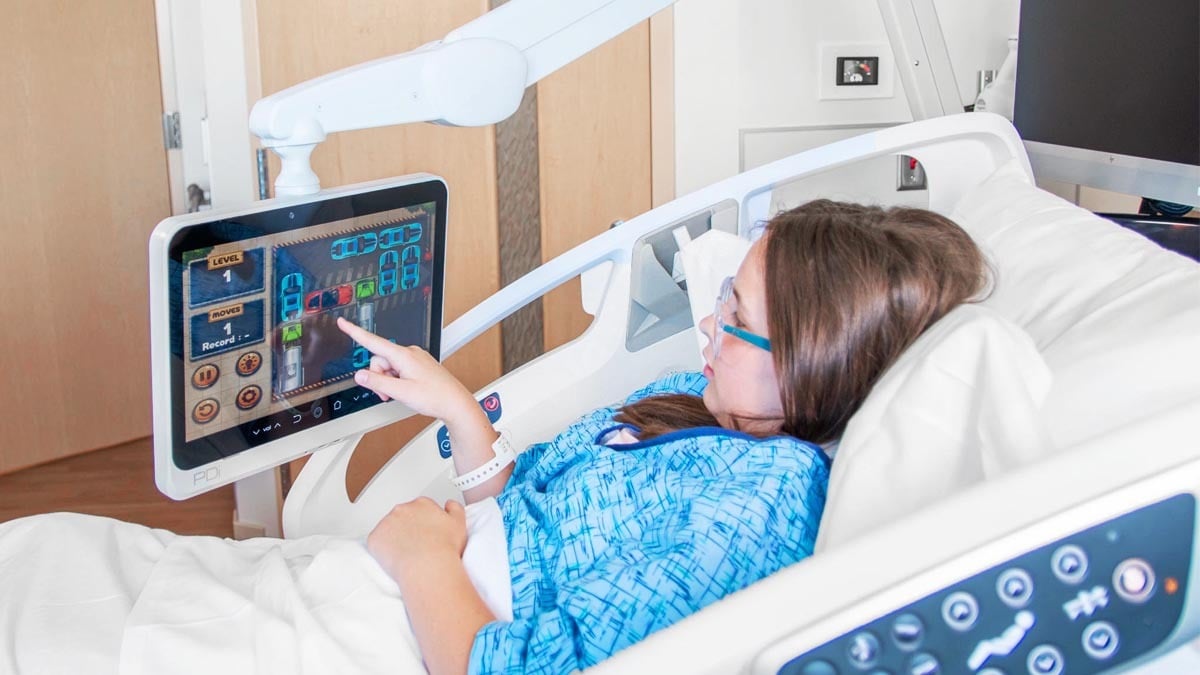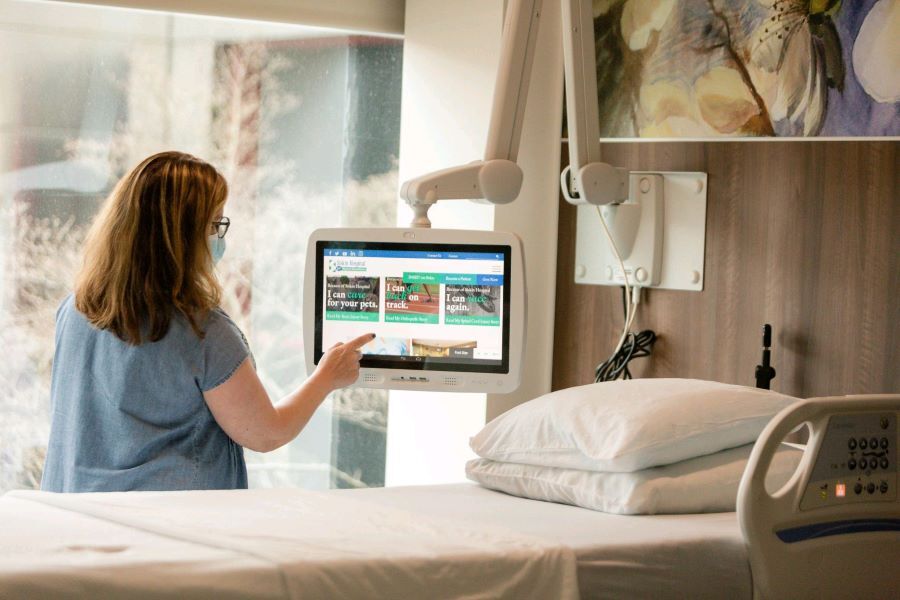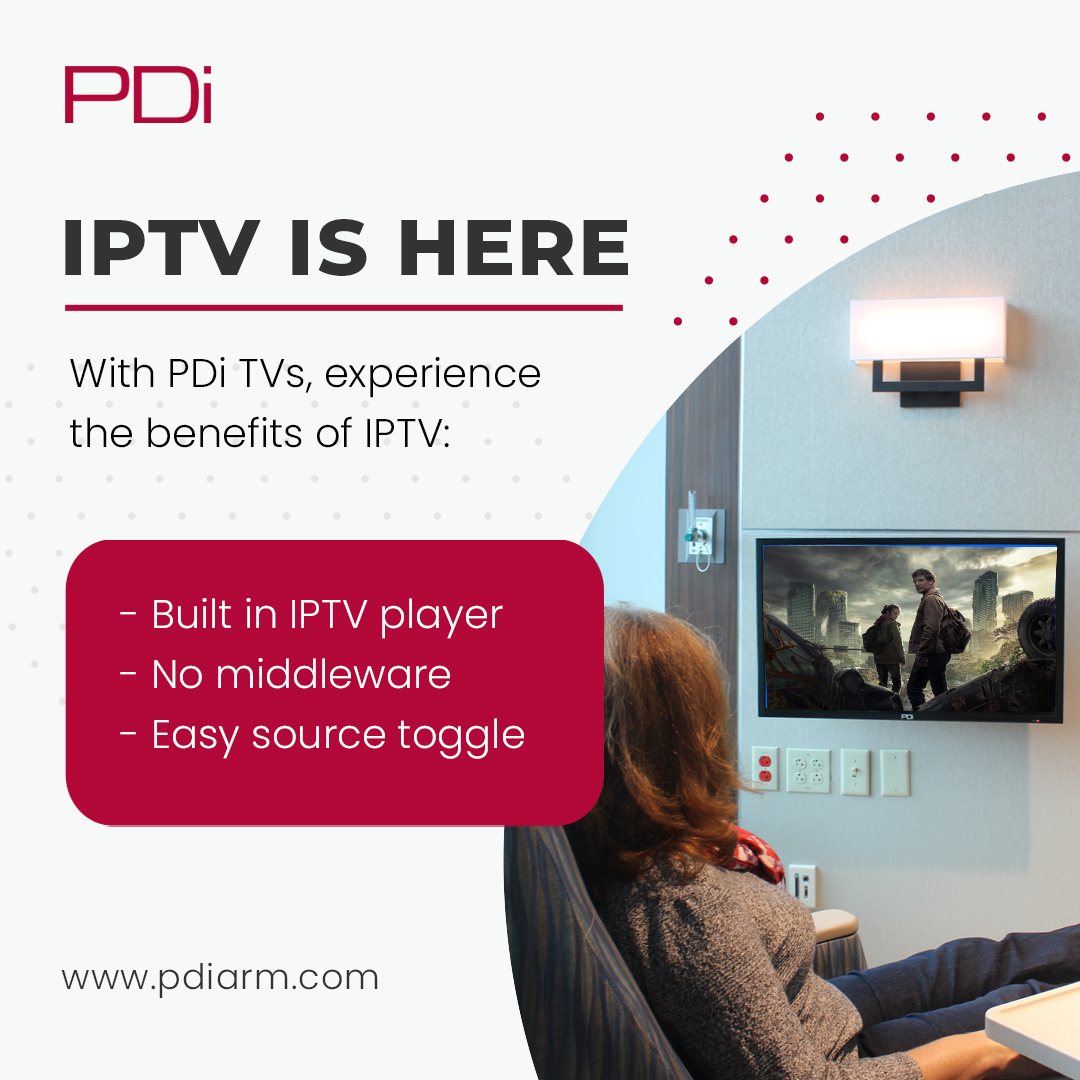
Have you ever used a personal arm-mounted TV in a healthcare setting, like a dialysis clinic or rehabilitation hospital center? If you have, you likely agree with what sets it apart from a traditional wall TV experience. While both devices have their advantages, personal arm TVs offer a patient-focused approach that prioritizes comfort, interaction, privacy, and more.
At a time when the healthcare industry is transitioning toward value-based care and emphasizing patient satisfaction, it's essential to cater to patient preferences and ensure they are engaged and content during their stay.
Below, we explore the top 6 benefits of arm-mounted TVs in healthcare settings.
![]()
1. Greater Patient Comfort
Personal arm TVs provide patients with adjustable viewing angles, offering them the flexibility to position the screen to their preference. Whether the patient is lying down, sitting up, or wants the screen close, far, or tilted in a certain direction, they can easily adjust the TV screen to their optimal viewing position.
Unlike wall-mounted TVs, which can be challenging for those with impaired vision, the elderly, or those with limited mobility, personal arm TVs cater to the patient's needs. This flexibility allows patients to watch TV and interact with content without straining their neck, ensuring they are as comfortable as possible during their stay.

2. Encourages Patients to Interact
Personal arm TVs actively encourage patients to interact. These devices can be equipped with touchscreen capabilities, internet access, and a wide range of apps to keep patients engaged.
With PDi’s cloud-based patient engagement platform, GENiO, patients can browse educational content, access health information through EpicMyChart, make video calls to friends and family, stream movies, and more.
Today's healthcare technology is evolving to mimic the convenience and accessibility of smartphones and tablets, offering a homelike experience that distracts patients from their pain or anxiety during treatment. This results in greater satisfaction and an improved perception of their stay.

3. Greater Sense of Control
Personal arm TVs offer patients a unique sense of control over their healthcare experience. In an environment where many aspects of a patient's life may feel dictated by medical procedures and routines, these devices empower patients by giving them a say in their entertainment and information choices. Patients can select their preferred content, adjust the viewing angle to their comfort, and interact with the screen on their terms.
This not only contributes to a more personalized and enjoyable stay but also fosters a sense of autonomy and ownership over their well-being. It's a small touch that goes a long way in improving the overall patient experience.

4. Enhanced Patient Privacy
During a hospital stay, patients often feel like their privacy is compromised, so it's important to provide privacy wherever possible. Personal arm TVs help safeguard patients' confidentiality and dignity. These devices ensure that medical information and conversations remain private.
Patients can use the screen for video calls with loved ones, consultations with healthcare providers, or access to health-related content without concerns about others viewing their information or overhearing their conversations. This added privacy fosters trust and peace of mind among patients.
.jpg?width=1920&height=1296&name=Untitled-1%20(1).jpg)
5. Optimized Space Efficiency
Personal arm TVs are a space-saving solution that reduces clutter and enhances the overall aesthetics of patient rooms. Traditional TV cabinets or wall-mounted TVs can be bulky and intrusive, consuming valuable wall space that could be used for medical equipment, decor, or other amenities.
Personal arm TVs, on the other hand, offer a sleek and compact design, with the flexibility to be mounted in various ways, whether on the headwall, casework, ceilings, or any location that best suits the unique needs of the healthcare space. This not only enhances visual appeal but also creates a more functional environment for healthcare staff.

6. Reduce Noise and Improve Satisfaction
Last, but certainly not least, patients, visitors, and staff appreciate that personal arm-mounted TVs reduce noise in the room and on the floor. Studies have shown that patients in noisy hospital environments are more likely to experience pain, anxiety, and sleep disturbances.
Reducing noise helps patients to rest, and also reduces stress on staff thereby improving morale, communications, and productivity.
1 min read
PDi Smart Hospital TV Hardware and Remote TV Management
Mar 6, 2025 by Cat Saettel
3 min read
Healthy Holiday Habits – Tips for Patients and Senior Residents
Dec 3, 2024 by Amber Polk

PDi Personal Patient TVs in 6 Healthcare Settings
In the world of healthcare technology, personal patient TVs have emerged as valuable tools. These solutions offer more than just entertainment – they...

Hospital TV Signal Options: IPTV, Satellite TV, Cable TV
In healthcare settings, providing entertainment options like TV is essential for patient satisfaction and comfort. A high-quality TV signal system is...

Beyond the Remote: A Guide to Hospital Smart TV Accessories
Gone are the days when patients were limited to controlling a hospital TV with a standard remote. Patient interactions have evolved, boasting a wide...




